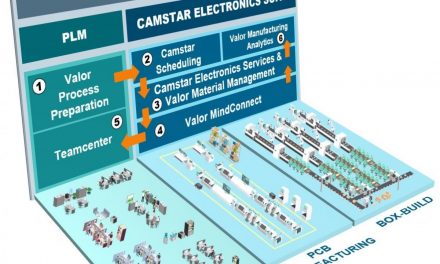New data from a recent survey shows the majority of engineers now trust AI to help select components for their new designs
Farnell research shows engineers now trust AI to select components
The results of a recent survey carried out by Farnell show that 86% of respondents trust AI to play at least some role in their component selection for their designs, and more than a fifth of those (23%) said they would “completely” trust AI to select components.
Overall, the results of the survey indicated that while engineers believe AI will have an increasing role in assisting with component selection in the future, there is lingering concern about intentional or unintentional bias in AI systems, with some designers saying that they would trust AI to play a “limited” role in selection that remained subject to reviews and checks by themselves. Although most respondents welcomed complementary AI, they also felt that human beings will always be required as part of the selection process, especially for safety-critical systems and innovative designs.
Among the interesting opinions were the following:
· One retired systems engineer said, “AI is no substitute for good engineering calculations. I have been following AI for more than 40 years and it is more overhyped now than ever.” When others pointed out that humans make errors, this engineer said, “I am more willing to tolerate human error than rely on an AI solution where I cannot control the data used to train the AI model.” This reflects a concern that engineers will not be able to fully understand why an AI module selects particular products.
· Another respondent highlighted a common view that AI could be more useful as an assistant rather than a replacement. He said, “That comes with the caveat that I’d reserve the right to vet everything the AI selected. In this capacity, AI would be used as an enhanced search engine of sorts.”
· A respondent that was keen to use AI said, “I don’t see why AI couldn’t be fully integrated into the component selection process. Hardware design is fundamentally composed of patterns. It’s just a matter of time until people discover ways to get online netlists and schematic PDFs and use them as good AI training data. In fact, AI will even be able to improve on them once there are better digital representations of devices and what’s inside them, coupled with telemetry from all of the subsystems. AI has a deep and rich well of sources to draw from that will enable it to learn even more. There are already completely generic AI systems that can do impressive, if limited selection, even building up simple VHDL for example. It’s specifying what logic to use and how to assemble it. AI is already writing code for me. All I need to do is vet it.”
· Another regular user of AI for selecting components nevertheless voiced misgivings about AI’s ability, stating that AI modules still have a lot to learn about reliably and how to consistently make the best and most appropriate choices.
Cliff Ortmeyer, Global Head of Technical Marketing and Solutions Development at Farnell, says, “Our survey results clearly show that engineers are beginning to see a path for AI’s place in terms of component selection in their designs, especially where safety or innovation are considerations. As AI models get more sophisticated, it seems clear that they will become more useful for modelling designs, selecting components, shortening design cycles and reducing time to market of new products.”
Results of the survey are available from Farnell in EMEA, Newark in North America and element14 in APAC.












